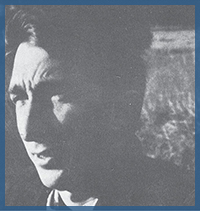
John Updike, born in Reading, Pennsylvania, was one of the most highly acclaimed writers of his era, as well as one of the most prolific, publishing over 65 volumes: novels, short stories, poetry, and art and literary criticism. Many of his more than 100 short stories originally appeared in The New Yorker. His first novel, Rabbit, Run, introduces Rabbit Angstrom, the middle-class, middle-of-the-road character who reappears in four later novels and comes to represent an American Everyman. Updike’s fiction frequently charts the decline of the American dream, but his religious faith and sensibility inform his work with optimism. He is admired above all as a prose stylist, with a dazzling command of language and imagery.
Lifeguard, from Pigeon Feathers
The well-known story, “Lifeguard” appears in Pigeon Feathers, one of Updike’s earliest books (1962) and is narrated by a divinity student at his summer job. From the heights of his wooden throne, the fastidious and aloof young narrator delivers a silent sermon addressed to the beachgoers, the middle-aged, burdened with children and aluminum chairs. Though full of himself and his mission, he appeals to us by virtue of his earnestness and promise, and the call for which he waits. Updike reads with a tender, ironic understanding of his haughty hero.
